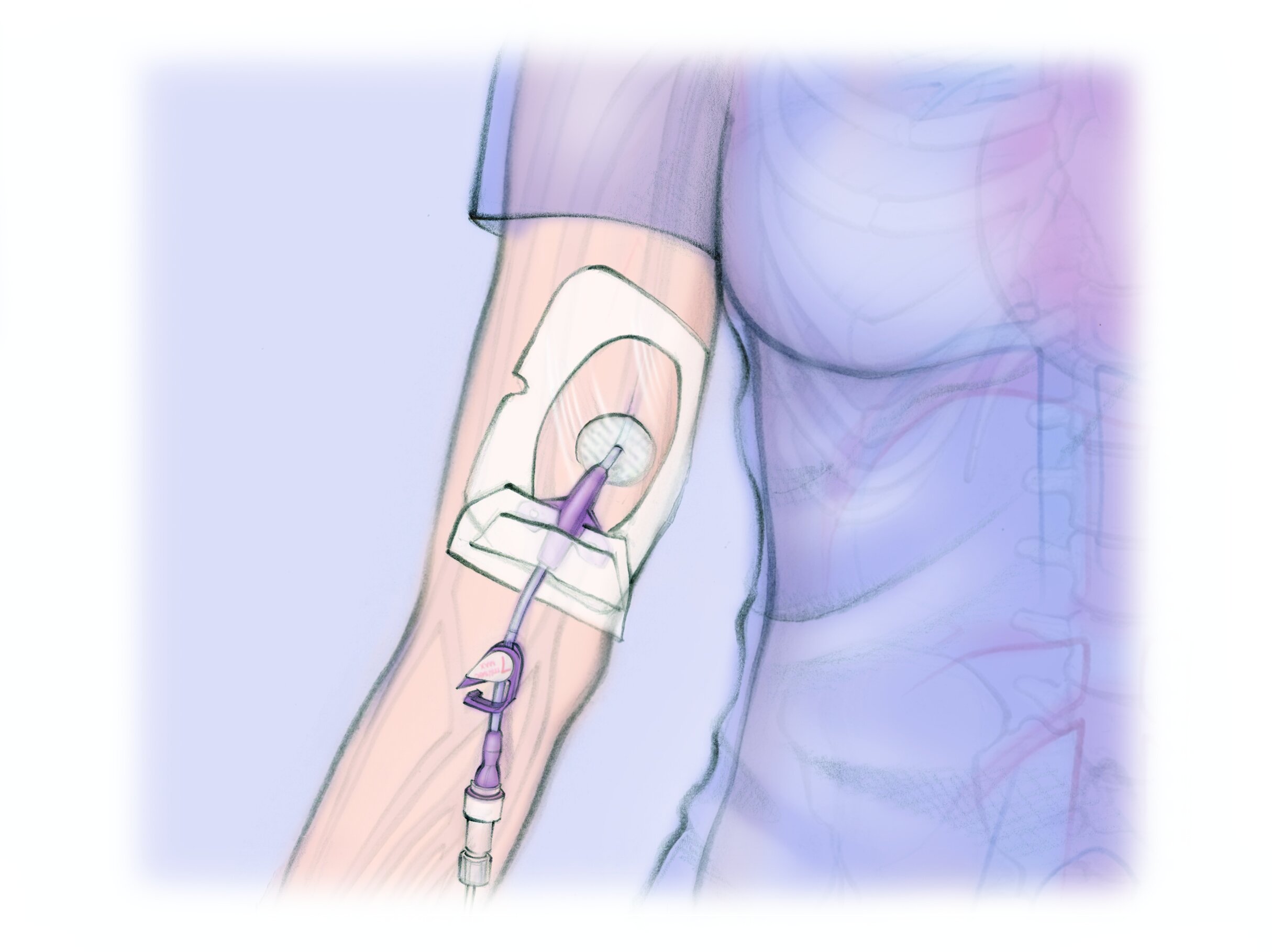What is a PICC Line?
PICC lines (Peripherally-Inserted Central Catheters) provide longer-term access to a person’s vein for medicines. A PICC line is a thin tube that extends from a small vein in the arm to a big vein in the chest. They can be used to give medicines that are too irritating to go into small veins but are fine for bigger veins. Also PICCs last longer than regular IVs. PICCs are good options for people in or out of the hospital who need longer-term antibiotics, medicine, or nutritional support. Blood can also be drawn from a PICC.
How is a PICC Line placed?
The clinician numbs the skin over an arm vein. The clinician threads the PICC into the vein until it reaches a big vein in the chest. The correct position of the PICC can be confirmed by using x-ray.
PICC Line Placement
1. The clinician finds a vein in the arm and numbs the skin.
2. They thread the long tube of the PICC through the vein until the tip reaches a vein in the chest.
3. They put dressings over the place on the arm where the PICC enters the skin.
What are the risks?
PICC lines are safe when placed by a specialist. Risks during placement are very rare and include:
Bleeding
Damage to surrounding tissues (such as blood vessels or nerves)
Over time, 2-15 out of 100 people with a PICC line will develop:
Infection
Blood clots (this happens more often in people who are hospitalized)
Problems with the catheter (it can get blocked or move)
These complications can be treated with medications. Alternatively, the PICC can be removed or replaced.
What are the alternatives?
Alternative 1 Not to get a PICC. However, you may not have a way to get your treatment.
Alternative 2 Regular IV. This is only an option if the treatment can be given into a small vein. Regular IVs must be changed every few days. They have a higher infection risk. Some medicines may cause pain in small veins.
Alternative 3 Ports may be another alternative for people who need an even longer-term solution. Ports have a small well placed completely beneath the skin, so they have the lowest risk of infection. The well is connected to a tube that travels completely under the skin of the chest and into a large vein in the chest. The well under the skin can be accessed with a special needle. Often the well is visible as a small bump on the upper chest. When the port is not needed, it can be removed.




